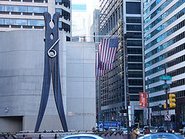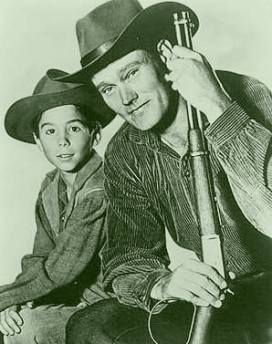 A-Z Retail Tricks To Make You Shop
A-Z Retail Tricks To Make You Shop
source: http://www.spacehijackers.org/html/ideas/archipsy/tricks.html
"If we went into shops only when we needed to buy something, and if once in there we bought only what we needed, the economy would collapse, boom." Paco Underhill, CEO Envirosell
Ever wandered into a shop looking to buy a few things on your list, only to find yourself coming out with twice as much? You may not be aware, but the reason for this is not sheer chance, or that you were just feeling frivolous. The retail industry spends hard time and money into creating all sorts of devious little means to make you shop that bit extra. Every penny you spend in their shop is not being spent at their rivals, and in the high stakes of today’s competitive market, every penny counts.
Below is an A-Z of retail tricks that we have compiled to empower you before you go out shopping, so that you can buy what you need and collapse our economy! More will be added as we root them out.
A
Aisle Order – Some customers, particularly men, tend to simply shop for what they want, walking down an aisle grabbing what they want, turning back and walking the way they came, this is called the 'Boomerang Effect'. In order to maximise shopper and produce contact time, shops therefore place major items and brands in the middle of aisles ensuring that from any direction the customer has to walk the furthest to reach them.
B
Baby Powder – Some UK baby shops now add Baby Powder to the air conditioning to remind people of new-born’s and relax them.
Baskets – Shops will actively hand out baskets and trolleys to customers, as people then feel embarrassed taking a basket with one item to the counter, and it increases the chances of multiple purchases. You will often find baskets to the right just after the Transition Zone.
C
Canned Smell – Most Supermarkets bake their bread early in the morning, however to entice more custom some have resorted to pumping out the smell of fresh baking bread to add to the illusion that it is constantly baked through the day. Go into Niketown on Oxford Street and smell the deodorant like pong they pump into the air!
Curved Aisle Ends – A lot of supermarkets noe curve the ends of their aisles, this is to ensure your eye never strays from the goods on display..
D
Displays – Displays are now regularly put at the end of aisles so that your eyes need never be taken from the merchandise. These are places where retailers will promote certain items as the customer walking down an aisle will approach an end display head on as opposed to at right angles as with the rest of the aisle.
E
Escalators – Multi-level Department stores often use their escalators to encourage you to see more of the store. Travelling either up or down the store you will find you have to walk half way around the level in order to find your next connecting escalator, as opposed to it being the one next to you. This has not happened by accident.
F
Flooring – Types of flooring are often used to direct customers as a retailer wants around the store. Department stores make great use of the difference between carpet and linoleum to subtly steer customers around and hold them in certain places. Occasionally you will find random rugs and mats laid out in aisles of supermarkets to slow traffic.
G
Go To The Back –Supermarkets hit upon the idea of placing the essentials, such as bread and milk, at the back of the shop. This is in order to make people have to walk past the rest of the produce, and heighten the possibility of impulse buys, in order to get their necessities. Changing rooms in clothes shops are almost always situated at the rear of the shop.
H
Hopscotch – One American supermarket chain hit upon the idea of drawing a hopscotch in the aisle next to the children’s cereal in order to make the children play and thus pin Mum & Dad to a point where the children could hassle them for treats.
I
Irrational Pricing - Irrational pricing is putting the price of items at say 4.99 instead of 5. Obvious as it may seem, apparently "The reason offered for not instead rounding $4.99 to $5.00 is based on memory processing time. Rounding upward involves an additional decision compared with storing the first digits. Furthermore, due to the vast quantity of information available for consumers to process, the information on price must be stored in a very short interval. The cheapest way to do so, in memory and attention terms, is by storing the first digits." Therefore customers perceive to be getting a better deal than they infact are.
J
Jumble Sale –Retailers use the effect of a Jumble Sale on some displays, messing them up slightly to make them look as if other customers have been rooting through them. Shoppers are instinctivly hesitant to mess up pristine displays.
K
Kitchen Fans – Several Fast Food restaurants have been known to re-direct the extractor fans from their kitchens (at the back) to the street at the front of the building. Thereby filling the surrounding area with the smell of fast food and enticing more custom.
L
Line Of Sight – Advertisers make great use of line of sight, by working out, or subliminally pushing, a customer to a particular position. The customer will then find promotional material or displays directly between them and where they wish to go, the stairs, exit, cashier etc.
M
Mirrors – Mirrors slow people down. Due to humans vain nature mirrors are regularly used on the front of shops in shopping centres and high streets to slow down the traffic and make people spend time in front of the shop. This is particularly true if they are next to Banks which speed people up.
N
Not Closing Down – There is a shop on Oxford Street in London which has been having a closing down sale for the last 6 years! Advertising last minute discounts to be made, the retailers rely upon people's instincts to catch those bargins before the shop closes. Using our fear of missing out on a deal, they add a sense of urgency to what is in effect a selling off of cheap stock.
O
Order Of Price- Shops will often be laid out in order of price with the most expensive items being encountered at the beginning of your visit and the cheapest at the end. This is done to play on our sense of comparion, we are much more likely to spend money on accessories etc if we have just agreed to buy an expensive item, as in comparison they will seem cheaper than had we encountered them first.
P
Point Of Sale - Whilst you are waiting to pay retailers often install Point Of Sale displays, this is especially prevalent in Supermarkets who install racks of chocolate to tempt bored children waiting with their parents.
Power Display – Right inside the door at Gap & Old Navy, you will find a ‘power display’, a huge horizontal bank of clothes, designed to act as a barrier to slow shoppers down. Functioning as a speed bump this is to shorten the length of the Transition Zone and make people start shopping earlier.
Purple - Apparently the colour Light Purple is most likely to make customers feel lilke spending money!
Q
Queues – Queues are a great place for retailers to add impulse buys to your basket. Point Of Sale displays, magazine racks, chocolate and other low cost items are often put here within easy reach of bored customers to pick up. This is also a great place for advertisers to ply you with information on their products as you are a captive bored market. This is used to effect anywhere a queue may form for example by the tills, changing rooms or toilets.
R
Returns Spiking – Blockbuster realise that when movies are popular and not on the shelves some customers will go to the returns rack (from which the employees stack the shelves) in order to pick up new films before they hit the shop floor. In order to boost sales of older films, the company decided to spike the returns rack with films that had not been hired in order to make them seem more popular.
Right – Upon walking through the Transition Zone most customers will veer to the right (US research). Some think it is because the majority of people are right handed. You will therefore find a prominent display just to the right after the Transition Zone. - As most people are right handed, you will also find that merchandise a store is trying to promote will be positioned just to the right of major items to that it is within easy and natural reach.
Repetition - Working us like Pavlov's Dogs, the cunning marketing man will use repetition to engrain ideas into our heads, or associations between products and arousal, i.e the constant use of beautiful women in car advertising. see here. Plus the use of repetetive slogans on the front doors, in aisles and then by the check out use this effect to drum ideas into our otherwise engaged brains.
S
Seats – Whilst installed to aid the shopper, benches also enable people to spend more time shopping in a store, 100% of benches will be facing the merchandise. Even within shopping centres you will find benches face shops and not the outside world, customers must remain focussed on the shopping experience.
Shuffle – Many shops have a poilicy of regularly rotating the stock, this happens especially in supermarkets where people regularly shop for the same items. The idea obviously is to confront customers with a varitey of items aside from their regulars and encourage them to explore areas of the shop they may not usually visit.
T
Tiles – Supermarkets used to have a trick placing slightly smaller tileson the floor in the more expensive aisles of the shop. When a customer entered on of these aisles their trolley would click faster making them think they were travelling faster and thereby subconsciously slow down and spend more time in that aisle.
Time – The longer customers spend in a shop the more they are likely to spend. Therefore shops work to make sure customers have to spend the maximum amount of time in their stores, placing obstacles constantly in the way of efficient shopping.
U
Upstairs – Shops will encourage you to enter the stores, and offer escalators up to the floors at the front, however in order to leave you will often find that the only route down is via stairs at the back of the store. This is to maximise shopping time. In clothing shops, men are generally sent upstairs, and then have to find their way back through the women’s floor to get to the front door, usually being placed downstairs in the lingerie dept, the one place men will impulse buy for their partners.
V
Visual Prompting – Using the lines between laminate flooring, or carpet patterns shops often try to guide you around as they wish. WH Smiths on Oxford Street in London has a giant arrow cut into the carpet with laminate floor guiding you straight to the centre of the store. Niketown also uses this idea with lines across the floor silently ushering people.
W
Windows – Department stores and Shopping Centres will not have many windows. Instead they rely upon artificial light and air conditioning. This is to remove the shopper from contact with the outside world and constraints of time (seeing it go dark outside).
X
Xylophone – Instore music is set at a tempo to relax customers and slow their sense of time. Often music is wordless in order to avoid making customers think, instead just setting the tempo of shopping.
Y
Yes – Would you like fries with that? If an employee asks if a customer would like to upgrade 47% will say yes. Staff will often be told to keep up-selling until the customer says no.
Z
Zone Of Transition – The area just through the doors of a shop, which it takes a customer to acclimatise to the shop surroundings and truly enter the shop. Merchandise, baskets and promotions in the area are lost on the customer, who has not fully transferred from outside yet.
Useful Resources & Bibliography
Well the first thing we did when looking into this whole area of retail trickery was to have a wander around our local High Streets and see what was going on. After spending a while actively looking at the shops rather than the merchandise a lot of little tricks began to spring to mind.
However there is only so much an amateur can spot, it takes the mind of a professional to give us the clues to the mind of the retail trickster:
Check out "Why We Buy" By Paco Underhill for a professional look into optimising retail design and Influence - The Psychology of persuasion By Robert B Cialdini for a look into how humans are persuaded into things by professionals.
also some of these websites:
http://www.placeperformance.com/ Architectural Psychology Services
http://www.bteam.com/arch_psych.htm Behavioural Team for Architectural Psychology
http://www.businessknowhow.com/marketing/miracles.htm Retail Business Miracles: Science and Psychology
http://www.queendom.com/mindgames/quizdom/quiz115.html Retail Psychology Quiz
http://marketing-bulletin.massey.ac.nz/article8/research1b.asp Odd Pricing
http://www.consumerpsychologist.com/ Consumer Psychology







No comments:
Post a Comment